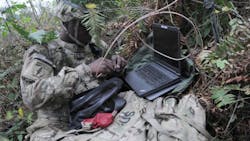Today's era of information warfare and drones can make the fog of war thicker, harder to penetrate
WASHINGTON – From fake-news trolls subverting U.S. elections to deniable drones blowing up Saudi oil facilities, America’s adversaries have found new ways to strike without giving the Pentagon a clear target to strike back at. Breaking Defense reports. Continue reading original article
The Military & Aerospace Electronics take:
1 Oct. 2019 -- That’s why the increasingly anxious armed forces are wrestling with so-called grey zone operations and information warfare. A successful response requires far more than the military, the Army’s three-star senior futurist says. It will take a unified effort with civilian agencies and foreign allies.
U.S. law and culture make that extremely difficult to do, Lt. Gen. Eric Wesley acknowledged. But the fog of war is a challenge the Army can’t simply set aside, he said. Letting adversaries muddy the debate can dramatically affect whether and how the military will be employed.
After drones and missiles temporarily slashed Saudi oil production in half, which Secretary of State Pompeo immediately blamed on Iran, it took President Trump three days to publicly state “it’s looking that way” but the evidence was still “being checked.” It took nine days for Britain, France, and Germany, all vital U.S. allies, to officially and publicly blame Tehran.
Related: Navy looking for new sensor technologies to see through fog, haze, rain, and snow at sea
Related: Panoramic thermal-imaging driving system for military vehicles introduced by Senso Optics
John Keller, chief editor
Military & Aerospace Electronics
